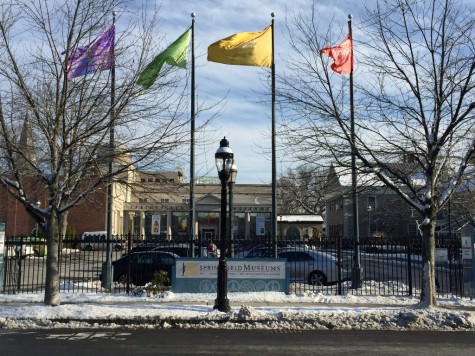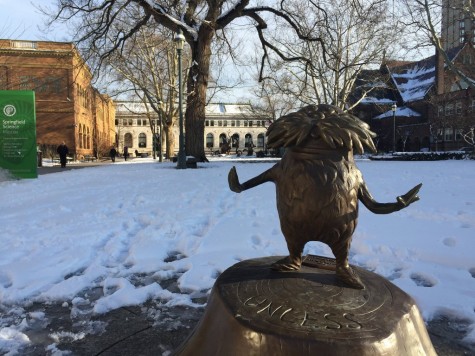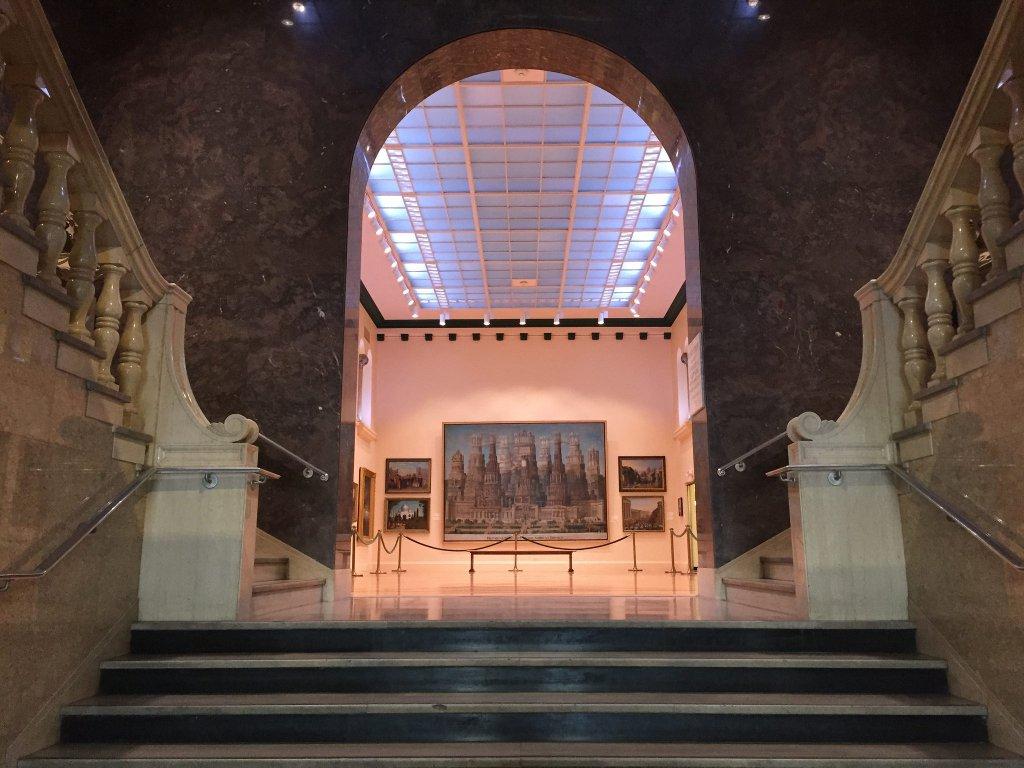The Springfield Museums: The city’s artistic oasis
Art, science, history and Dr. Seuss; four small, distinct museums all rolled into one at the Springfield 'Quadrangle.'
March 24, 2016
Among gritty Springfield streets an oasis awaits, a beckoning promise of hidden treasures. Once immersed, you’ll find it hard to believe that this hidden gem rests in the second most dangerous city in the Northeast.
The Welcome Center, built in a classical style, stands in contrast with the dark, dilapidated downtown. Bold letters give a name to this oasis: the ‘Springfield Museums.’ Also known as the “Quadrangle,” these four museums are housed in the same complex.

Outdated decor pops against the grand exterior inside the Welcome Center. Large, faded fake fish hang above the stairway to the left, and racks of knick-knacks and old-fashioned postcards fill the rest of the small space. If you climb the stairs and take a right at the taxidermy polar bear, you will find the Science Museum.
The museum is somewhat kitschy. Walking through the halls is like stepping back in time, and the nostalgia is charming.
The entrance opens to a long hall of life-size dioramas. Glass panels reach from floor to ceiling on either side. They act as windows that allow you to peer into still-life worlds, each complete with more taxidermy local wildlife, fake vegetation and painted landscape backgrounds than the last.

African mammals, dinosaurs (both plastic and genuine), shelves of minerals and indigenous artifacts fill the rest of the Science Museum, as well as everything else you saw on Bill Nye as a kid, from solar system models to weather simulators.
The exit of the museum opens onto the Dr. Seuss National Memorial Sculpture Garden. The lawn stretches across the center of the quad, sandwiched by the three other museums on each side. Some of Seuss’ most beloved characters stand in bronze, scattered across the lawn; a nearly life-size Horton, the elephant from “Horton Hears a Who!” glints in the sunlight, and a matching six-foot Cat in the Hat stands beside a reclining Dr. Seuss, seated at his work desk. Observers become children again, unable to resist the temptation to join the bronze creatures. For a moment, they are actors on the pages of a Suess story, surrounded by familiar faces.

The garden stands as tribute to Suess, a Springfield native. The sculptures were created by sculptor Lark Grey Dimond-Cates, Suess’ stepdaughter.
The D’Amour Museum of Fine Arts is an art-filled labyrinth, with a grand marble archway as its entrance. In the American gallery, you’ll find an expressive John Singer Sargent work, “Glacier Streams – The Simplon” from 1910. His depiction of a mountain face captured in wild brushstrokes brings this scene to life — it seems as if the raging streams will pour forth from the frame onto the floor below.
The rest of the D’Amour features a variety of artwork, from Italian Renaissance oil paintings to contemporary sculpture. Chalkboards cover the entire hall for the interactive “Leave Your Mark: Community Drawing Wall.” Small buckets are filled with chalk for visitors to leave their own mark.
Across the lawn, the George Walter Vincent Smith Art Museum sports a terracotta-colored brick façade, adorned by a colonnade of arches. Tiffany stained-glass windows line the interior of one room, each refracting the afternoon sunlight into brilliant shards of color. Glass cases hold ancient Chinese cloisonné and Japanese arms and armor. This museum has an air of whimsy, and its contents seem encrusted with glittering jewels.
Museum spokesperson Matt Longhi said the Vincent Smith has “an eclectic Victorian style,” while the D’Amour has a more “encyclopedic look at art.” This last description bleeds over into the fourth museum’s collection.
If you cross the main street that runs through the quad, you’ll find the Lyman and Merrie Wood Museum of Springfield History. One of the newest buildings, this museum is separate from the rest.

The museum, next to one of the quad’s free parking lots, documents the history of Springfield, once known as the “City of Homes.” The second floor of the museum houses an army of mint-condition motorcycles. The bikes are accompanied by complete archival information and preserved memorabilia.
To the left of the entrance, you’ll find a special exhibition. “Better Angels: Firefighters of 9/11” by Dawn Hopkinson Siebel covers the entire wall. Painted portraits adorn small squares of charred wood, portraits for every New York firefighter who responded to the World Trade Center attacks and perished. The special display, on view until July, sends a chill up your spine that has nothing to do with the still cold weather.
After meandering through the quadrangle, you won’t be surprised to learn how popular it is. According to Longhi, on a typical summer day, the lawn is full of picnicking families.
The Quadrangle, located about 45 minutes from Amherst by car, is open until 5 p.m., Tuesday through Sunday. Students receive a general admission discount, and Springfield residents are admitted for free. Take a look at what these museums have to offer.
Email Megan at [email protected] or follow her on Twitter @meganfischer11
